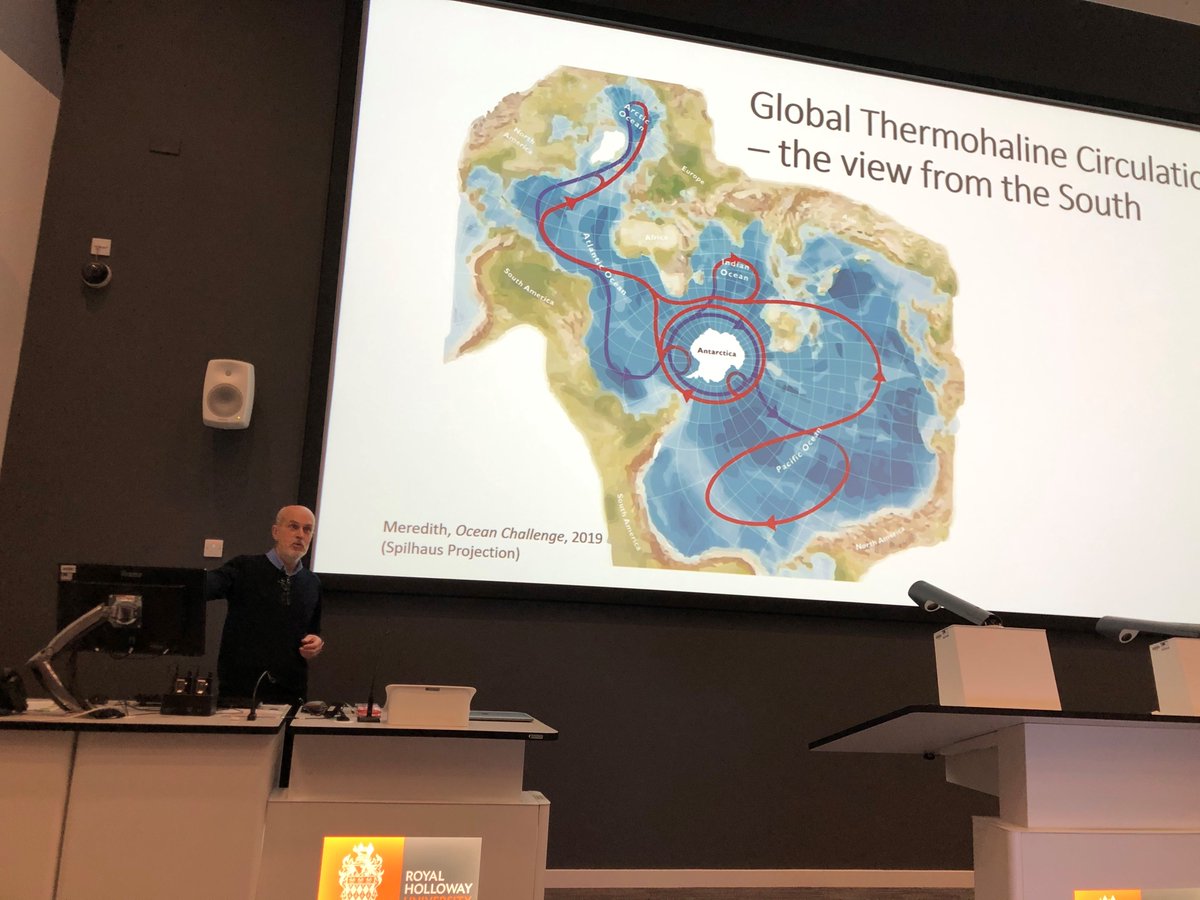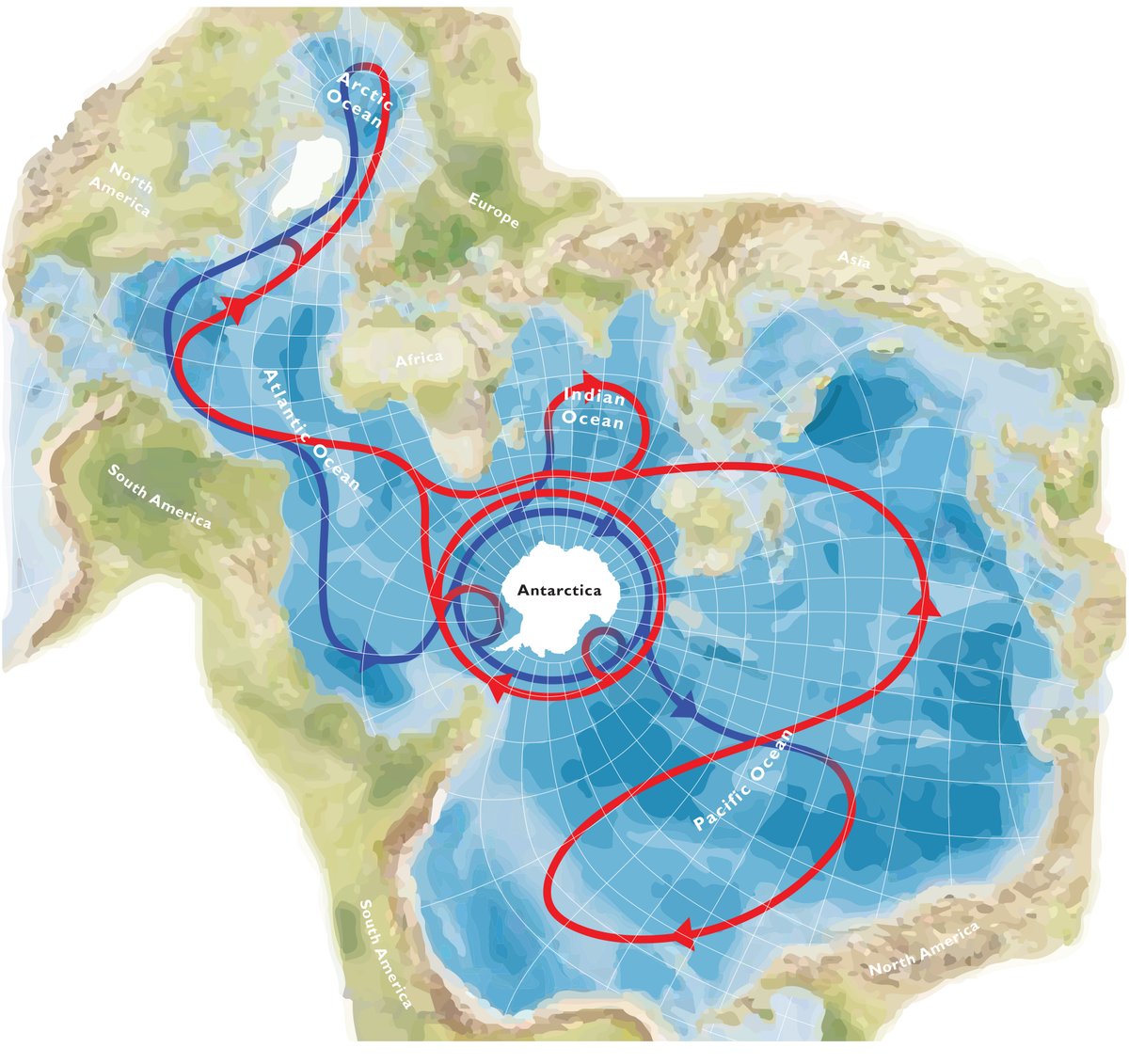
Any post about declining #seaice extent triggers replies pointing out that as the ice is already floating it doesn’t make any difference to sea level. This is correct of course (well, nearly). So why does sea-ice loss matter? There are several reasons. 1/11
https://twitter.com/rdlarter/status/1627398886686875649
Firstly there is the high “albedo” of the ice. It reflects a lot of incoming solar radiation. Reduced summer sea-ice extent exposes more of the ocean surface, which is darker (lower albedo) and thus absorbs more radiant energy, warming the water. 2/11 

A second reason is that the normal seasonal fluctuations in sea-ice extent are of great ecological importance. The plankton bloom that occurs each Spring as the sea-ice edge retreats is the foundation of the Southern Ocean food chain. 3/11 

A decline in Antarctic sea-ice extent will result in this Spring bloom occurring earlier and further south, with uncertain ecological consequences. 4/11
A third reason is that sea ice in front of ice shelves (parts of the ice sheet that flow out over the sea) protects them from ocean swell, and in some areas continuous “landfast” sea ice sheets buttress ice shelves directly.
doi.org/10.1038/s41586…
doi.org/10.5194/tc-12-…
5/11
doi.org/10.1038/s41586…
doi.org/10.5194/tc-12-…
5/11
A fourth reason is that “brine rejection” during seasonal formation of sea ice is a key process in the formation of dense water masses that sink to the depths of the ocean and are critical to driving the global overturning thermohaline circulation. 6/11 

Reduced sea-ice formation means less dense water production, which weakens the overturning circulation. One component of this is the Gulf Stream, which is important to the climate stability of northwest Europe.
ucl.ac.uk/news/2021/feb/…
7/11
ucl.ac.uk/news/2021/feb/…
7/11
Another common response to posts about declining sea-ice extent is that the satellite record only extends back to 1979, so may not capture some longer-term cyclic variations. While this is true it is disingenuous to suggest that the decline is unrelated to recent warming. 8/11 

During the recent RV Polarstern #PS134 research cruise we witnessed a very clear indication of longer term change, as we were working in ice-free seas in the same area as the Belgica was trapped in sea ice 125 years ago.
discoveringbelgium.com/voyage-of-the-…
9/11
discoveringbelgium.com/voyage-of-the-…
9/11

Although Antarctic sea-ice extent varies somewhat from year to year, so we need to be cautious in identifying trends, it is unthinkable that the conditions experienced on the Belgica expedition could occur these days even in a high sea-ice year. 10/11
Finally, for any nerds who want to look further into the comment I made in the tweet at the start of this thread, about sea-ice melting not making any difference to sea-level only being nearly correct, here is some further reading on the topic. 11/11
doi.org/10.1029/2007GL…
doi.org/10.1029/2007GL…
• • •
Missing some Tweet in this thread? You can try to
force a refresh









